
Newsletter
Sign up and stay in-the-know about The Crowd & The Cloud and the world of citizen science.

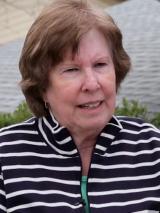
You were living in Fort Collins during the 1997 flood that got CoCoRaHS started. Tell us a little bit about what the weather was like?
Anne Deshon:
About a half mile away is where the five people who perished in that flood were living, where they actually died. What was so interesting about that was we got very little rain. We heard the next day the measurements that were taken farther to the west: up to 14 inches dumped in a very short period of time. We got maybe 2 inches at our house.
We first became aware that there was a problem because of helicopters flying nearby. And we were trying to figure out what in the world is going on, it literally was just right down the hill from us. That’s probably the thing that amazed us the most and made us realize how much it could change just from one section of the city to another. It depends so much on the landscape, buildings can alter the rain pattern or vegetation. It was just unbelievably startling to know that people would die just down the hill from all this water.
Do you think the data submitted by nearly 20,000 citizen scientists, is helping create a sense of weather watching community around the country?
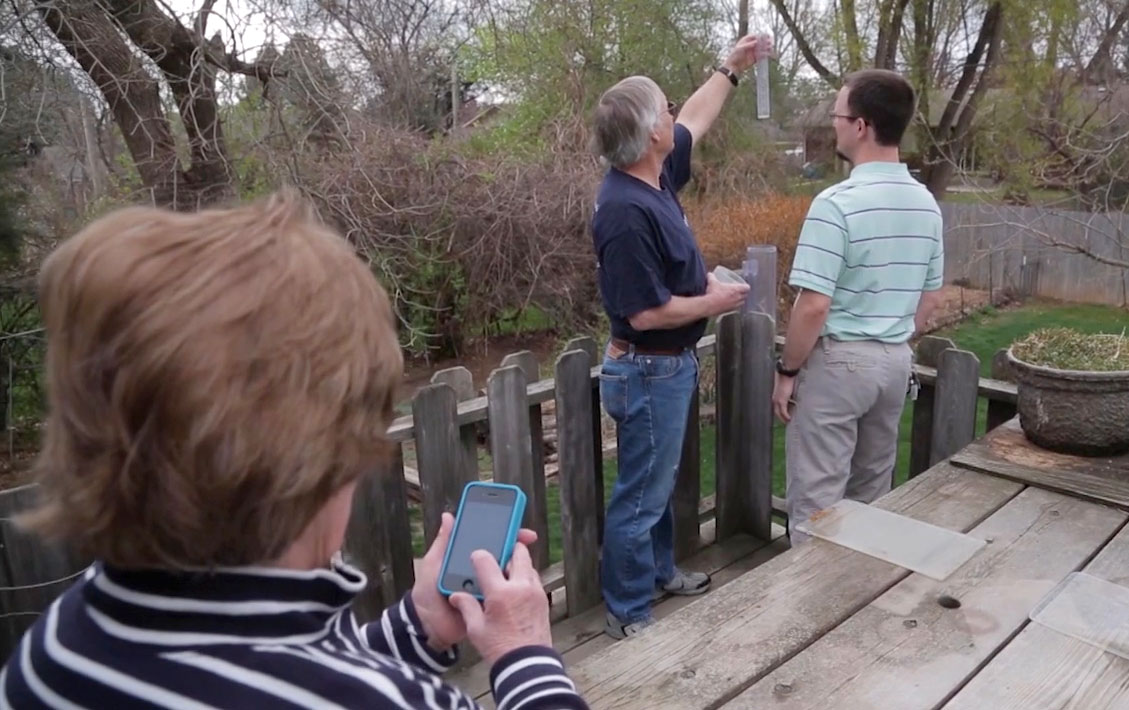
I think in individual areas it creates a community. Here, I can go into our health club and if I have a CoCoRaHS shirt on it’s amazing how many people will say “Oh are you involved in that”? Sometimes they are scientists, sometimes they’re all the volunteers, but this kind of a sense that “Oh boy, you’re somebody that I’m working with”. There is one lady that I see were fairly regularly who’s one of the scientists for the City of Fort Collins. They of course are taking the data and using it in connection with the sewer system and a lot of different planning. I’ve even had grad students come up to me, and I would assume that sort of thing happens other places too. I just find it very interesting as to how it starts conversations and people are very interested. I think it’s been a worthwhile thing and it does bring people together. And there’s a lot of people!
What sort of personal satisfaction do you get out of being part of CoCoRaHS?
It’s fun to go and look at the maps and actually see the way the weather has been perched in kind of a wave across the city. Just knowing you’re a part of something that is maybe going to help protect people in terms of tornadoes or severe hail damage. Whatever. Just knowing that you’re helping.
How does CoCoRaHS contribute during extreme weather events?
Bob Deshon:
You know, we’ve been here through two major flood events in Fort Collins. In 1997 there was rain, but we didn’t really have much indication that there was lethal flooding going on very close to our house, half a mile away. We had about 2 inches of rain that night but I remember, the morning afterwards, the street was dry with no puddles; no evidence that there had been serious rain. It wasn’t until later that day that we learned there had been massive rainfall on the western side of town and five people died. It’s like... wow.
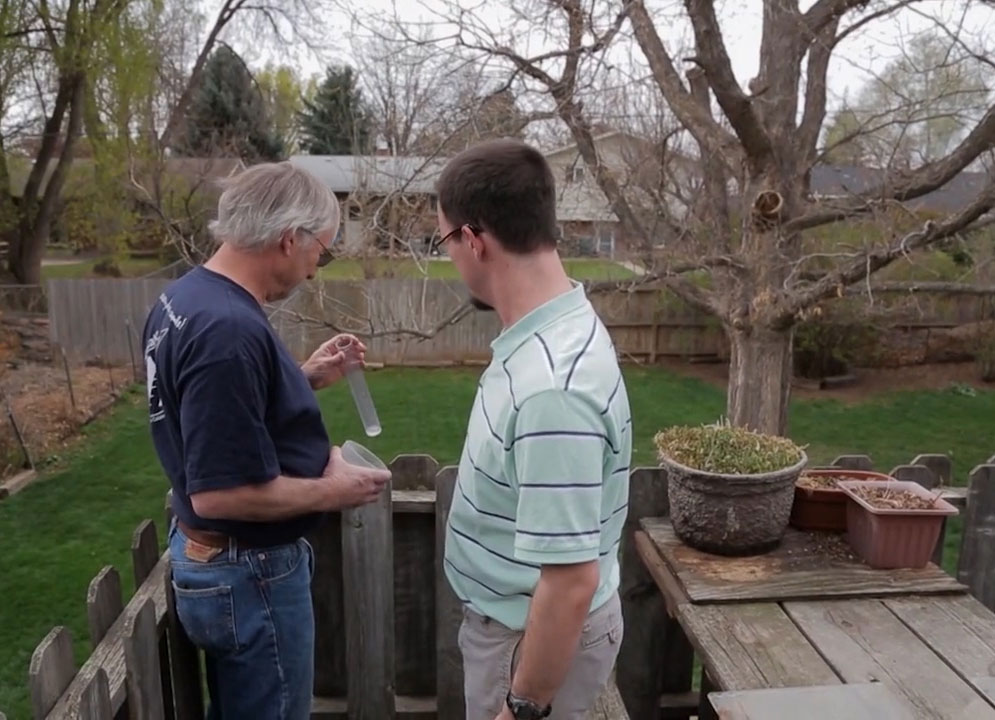
When the weather forecast started coming up for the 2013 flood, there wasn’t a sense of panic, they said it could be severe, but it was not the sense of “Oh my gosh. we’re gonna have another 1997 issue”. They did proactively station people at bridges and monitored where they knew flows would be coming, but it was based largely on this local network of weather stations that the city subscribes to and it provides them with data that they can use.
CoCoRaHS is an individual contribution. Early on, when hail storms or severe rain occurred, they requested that we notify them by phone so that they could verify with radar. The community data that comes in aggregates numerous individual observers and substantiates readings that are collected by the National Weather Service stations. It may also show that where their station’s weather radar is located may not be picking up local variances in intensity, in duration. CoCoRaHS volunteers fill in the empty spots that they have in that regard. It corroborates the general trends but it also pinpoints the local differences.
Water is a funny thing around Colorado, there’s extremes in both too much and too little. Obviously, when we get too much, too fast, the rivers overflow, the soil gets saturated and damaged. When the fires come through they impinge the ability of that soil to hold water. When too much happens too fast you get a lot of runoff full of debris that gets washed into waterways. It clogs up bridges, it really inundates roads and makes things really hard to deal with. This is still basically an agricultural area, and people really don’t fully appreciate how much water impacts every aspect of our lives.
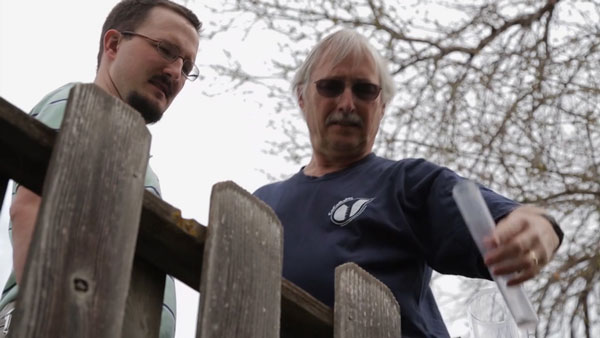
What’s the largest amount of water that you’ve ever had in your gauge?
Several times after significant rainfalls we’ve had rain that exceeds the column volume of the rain gauge. We probably had 4 or 5 inches as the maximum that we’ve ever collected, and it’s really amazing to read the overflowing 1 inch level and pour it out and for three or four more 1 inch levels. You have no idea how much rain has fallen until you’ve measured it, but it emphasizes to me that immense variability of weather that we get around here.
Many times we’ve seen a fraction of an inch or a trace. Sometimes it doesn’t even register in the gauge, but we know we’ve seen it on our yard and driveway, so we have to call in a trace, it’s not measurable but we have to call it in. I think it’s kind of gratifying to see a big rainfall. We love the water around here but it’s gratifying once a while to see some real rainfall. There’s a lot of days we come out here and there’s just not gonna be any rain. We haven’t had rain for days or weeks, but a “zero” is still a valid measurement of precipitation.
Does gathering your gauge data feel like a chore? What do you get out of it?
Every morning the protocol calls for a reading at 7 o’clock so I come out and read the rain gauge or come out and measure the snow, within a couple of minutes of 7 o’clock every morning. You know, at first I thought it might be a kind of a chore but we’ve been doing this for 17 years now and it’s become such a regular part of our routine that I don’t think about it. It’s a duty, but there’s no burden of having to do this. It’s really fun to do.
I really enjoy the sense of contribution. I know that this rain gauge does not tell me what’s going on around the whole city but the aggregate of people that are in the city, in the community, are all reading weather at the same time. Sometimes there’s weather going on, and we have no indication of how severe it is any place else. We have just what we can see looking here in the sky, but in aggregate we can see rainfall and snowfall measures to get a real sense of where weather is happening. Weather occurs in bands as it goes across this area, and you can see a lot on live radar, but the daily 24-hour recordings really give a permanent record of what has happened over that day’s period.
Tell us how you got started in CoCoRaHS?
Chase Deshon (the Deshon’s now grown son):
I got started with CoCoRaHS when I was 14. I got very lucky in to get involved with weather. Whether it was rain, snow or hail it always captured my imagination of what would be happening next. It can change in a matter of seconds. So as a result, I just kept my eyes to the sky.
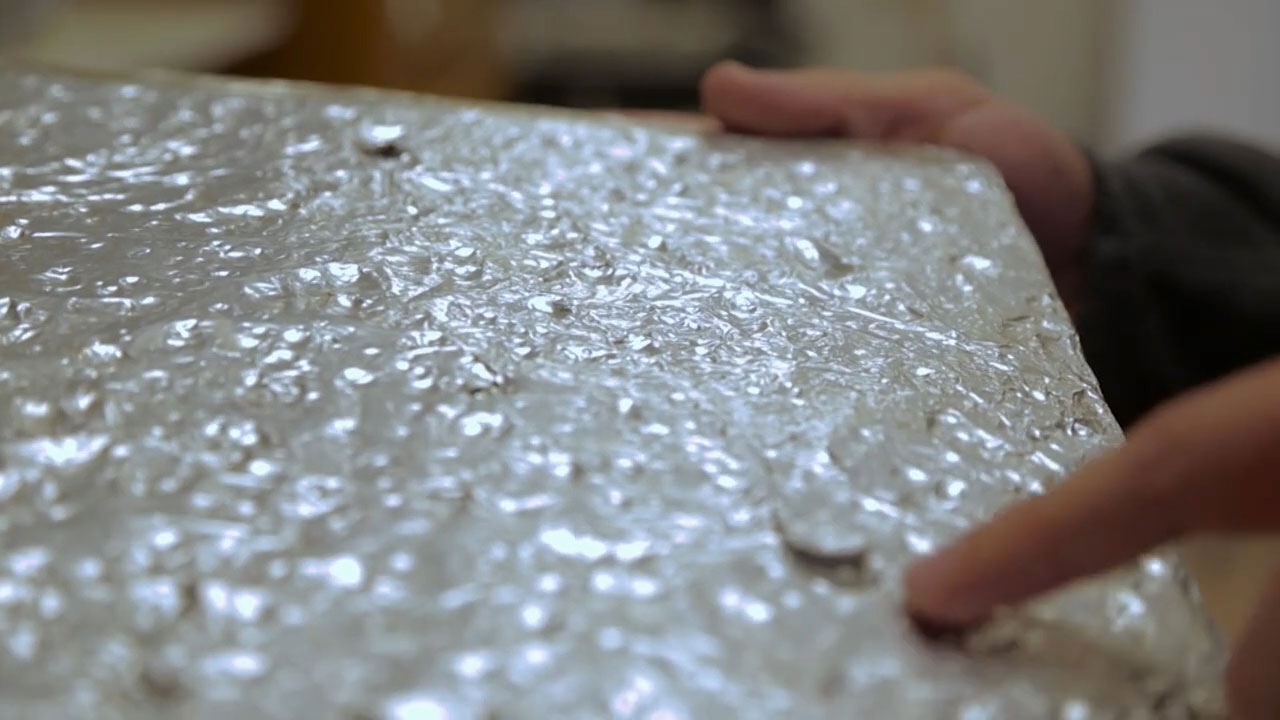
A dented hail pad enable CoCoRaHS observers to count the size and amount of hail.
I did an Eagle Scout project for CoCoRaHS, built and constructed over 1,200 hail pads used for measurement of hail. Scientists could take that data and be able to extrapolate measurements based on the size and intensity of the hail over that square-foot of area. I actually had a squadron of about 30 to 40 volunteers assist me in the construction of all these hail pads and surprisingly it took us only a day. It was a good feeling of accomplishment because I knew that this would help further the volunteer program for CoCoRaHS. Being able to get more hail pads out to a lot more people would help the program expand at a faster pace than what they were expecting. (CROWD & CLOUD: please see our“Extreme Weather: Reporting Hail Sizes” web video for more on how the hail pads are used and useful.)
Does being hearing-impaired challenge or benefit you when participating in CoCoRaHS?
Being hearing impaired and being involved with CoCoRaHS, created a unique situation for me only because I had a different perspective on weather than most people. This is because I wear a hearing aid. Lightning creates a lot of electrical static charge and so whenever lightning was about to discharge, my hearing aids would pick it up. I’d be able to hear the lightning before but it actually I occurred. I’d say “Hey, there’s about to be a lightning head right over there!” And sure enough a few seconds later it would go off. I use that to my advantage instead of a disadvantage. So it was always an enjoyment to use.
How is CoCoRaHS data helpful?
The data that we use is actually really, really helpful. It creates a map of how these storms develop and how they spread about the landscape. It creates a model of climate in regards to how much precipitation is coming out of the storms in different areas of each storm that passes through. And so it allows us to be able to see how obstacles will change the pattern of the storm. It could be by wind or the landscape itself. That data across a larger scale gives a better idea of what’s going on around us whether it’s immediately above us or 500 miles away.
How can young people be inspired to participate in CoCoRaHS?
I think the biggest thing about CoCoRaHS in terms of getting involved is just the pure enjoyment of being able to see visual measurements out of our everyday lives. From the rain gauges the hail pads, being able to see that data actually come to life in an everyday manner. Younger folks really would enjoy seeing nature in action. That’s what really brought me into the action, and then seeing the results afterwards. I think a lot of younger folks would be really intrigued by what nature has to offer in weather. With CoCoRaHS, they can actually get their hands on it.
